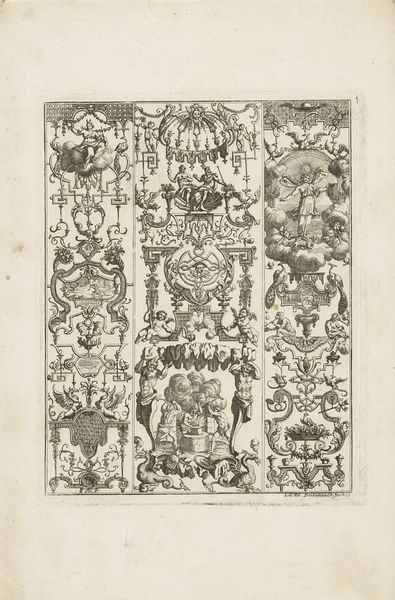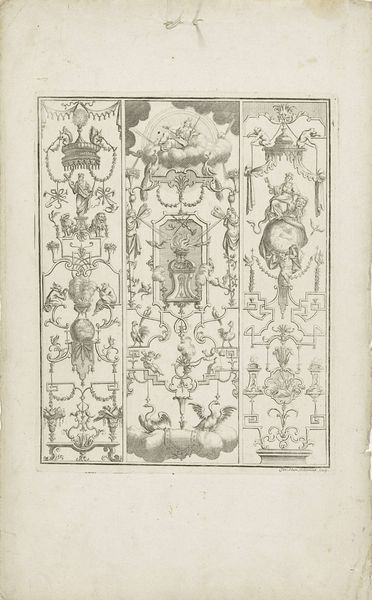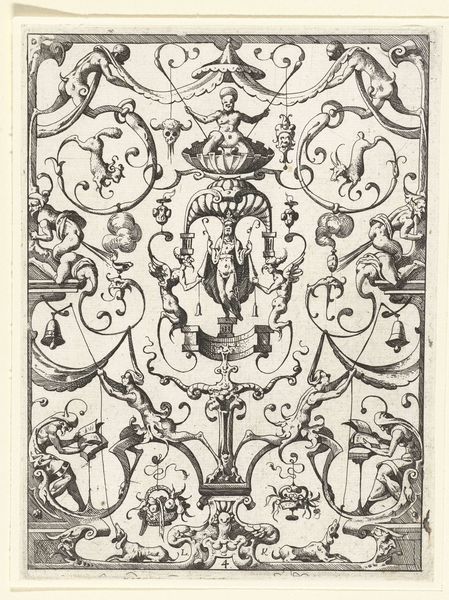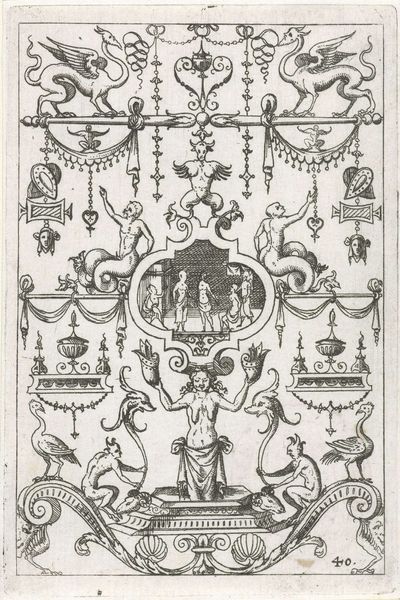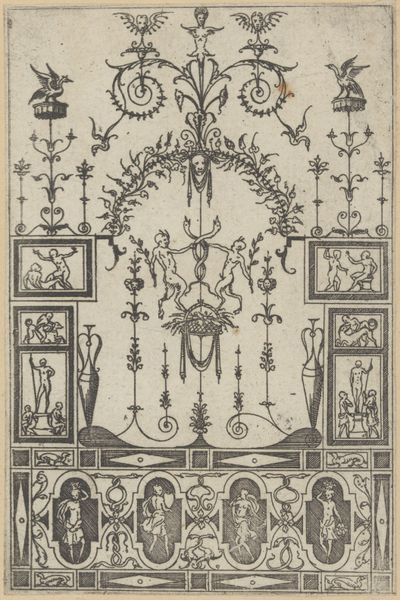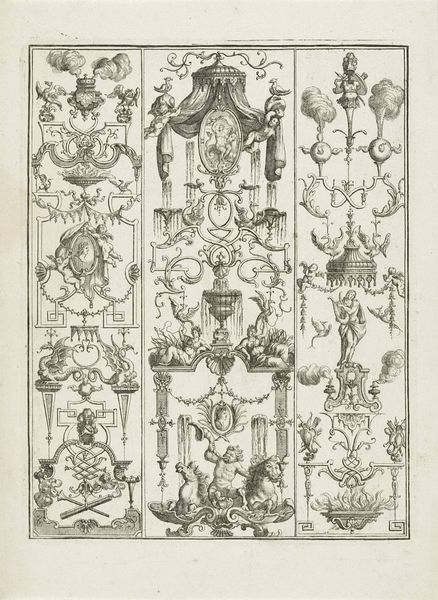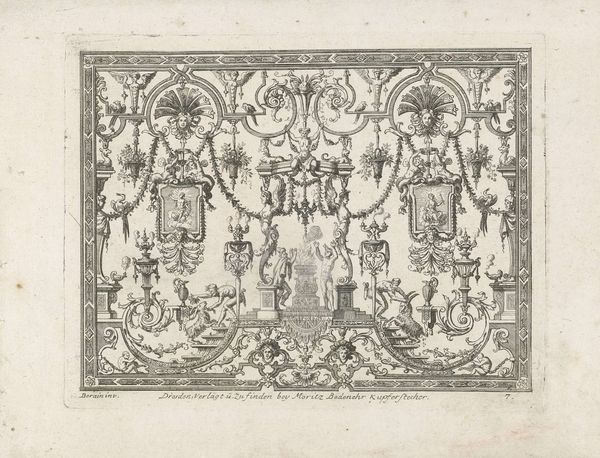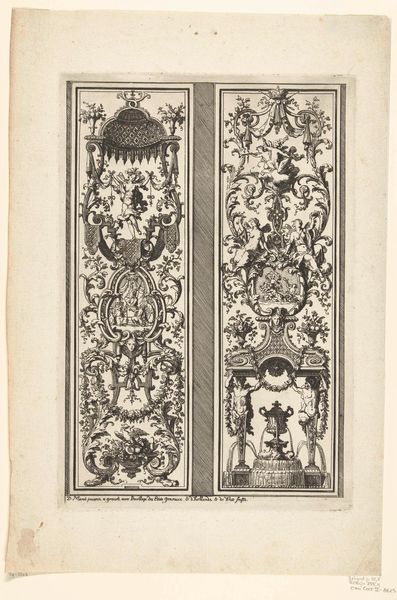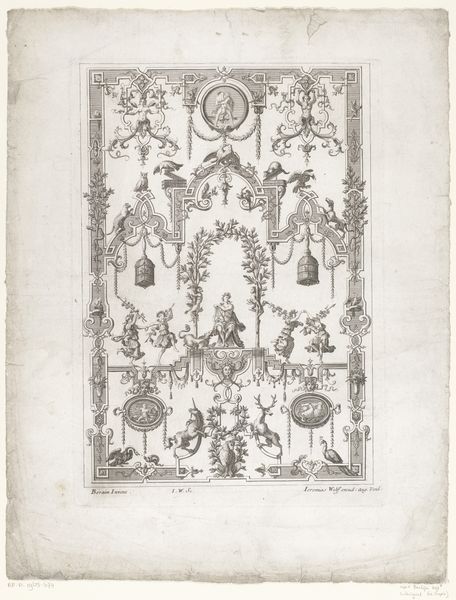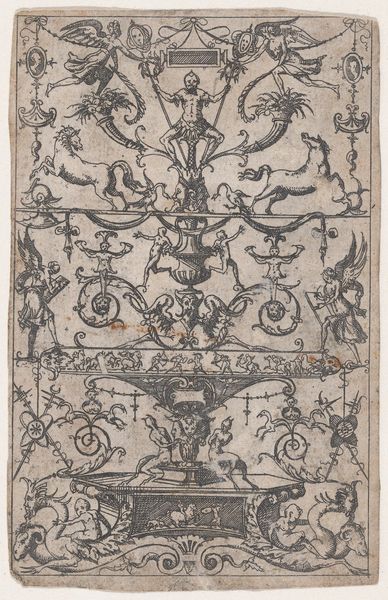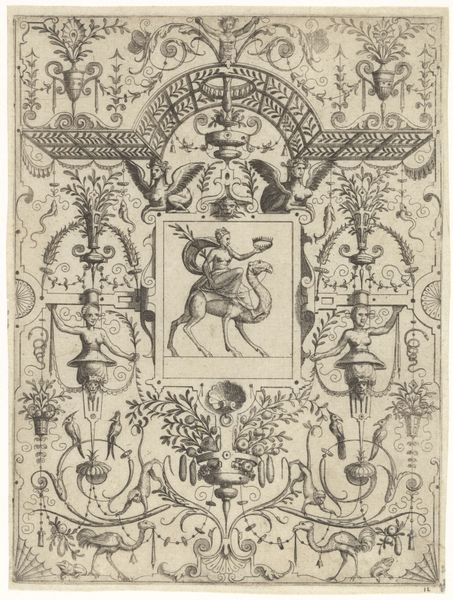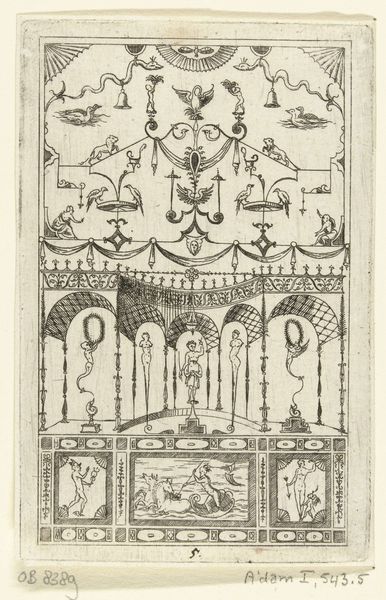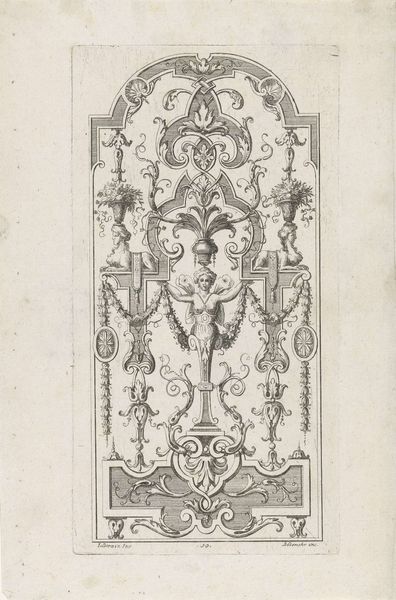
#
comic strip sketch
#
aged paper
#
old engraving style
#
sketch book
#
personal sketchbook
#
ink colored
#
pen and pencil
#
pen work
#
sketchbook drawing
#
sketchbook art
Dimensions: height 220 mm, width 176 mm
Copyright: Rijks Museum: Open Domain
Curator: Johann Adam Delsenbach's "Grotesken met Neptunus en Minerva," created between 1700 and 1725, presents an intriguing example of early 18th-century printmaking. Editor: Wow, it's so intricate. The way all these ornate details are packed together makes it feel quite overwhelming. Almost claustrophobic, but in a fascinating way. Curator: Delsenbach's process involved using pen and pencil for the initial sketches, then utilizing an engraving technique. We see here what appears to be ink wash employed to add shading and depth. The aging of the paper itself is worth noting, giving it an authentic character. Editor: The figures of Neptune and Minerva caught my eye immediately, and how they’re juxtaposed with these… almost cartoonish flourishes. It's interesting to consider how this period understood representations of power and wisdom through the lens of decorative art. There's this sense of spectacle intertwined with ideological messaging. Curator: It reflects a wider trend, placing high art within reach for a broader audience, circulating cultural capital beyond the elite. How accessible would images like these make such concepts to a print-buying public, I wonder? Editor: Absolutely. Think about the social context – the rising merchant class, the burgeoning print culture… It challenges notions of 'high' and 'low' art forms. What political narratives might these seemingly harmless decorations promote? Was this simply a way of reinforcing dominant narratives? Curator: Or a space where emerging voices could experiment, challenge, and subtly critique through visual language. These printed sheets provided new avenues for dialogue. The aging of the paper really emphasizes the lifespan and endurance of the artistic and printing craft over time. Editor: True. Seeing the remnants of these older engraver works invites speculation. What other stories has this sheet been part of, or witnessed? And how have interpretations of these classical figures changed in response to modern society? Curator: It's the physical reminder of creative labour from centuries past. It certainly brings into sharper focus that act of labor, of art creation, the consumption and then the material aging...It all holds value. Editor: Precisely. Thinking about its cultural impact and legacy forces us to confront power and visibility. Curator: Thanks for that insight. Editor: It was my pleasure!
Comments
No comments
Be the first to comment and join the conversation on the ultimate creative platform.
